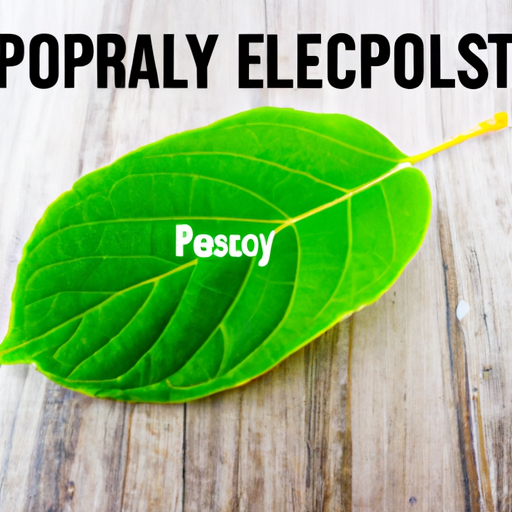If you’re someone who cares about the environment and is on the lookout for more sustainable options, then you might have wondered: are there any eco-friendly pellets available? Whether you’re using pellets for heating, cooking, or even bedding for your pets, finding a greener alternative is becoming increasingly important. In this article, we will explore the market for eco-friendly pellets and discover if there are any options out there that align with your environmentally conscious values.
Wood Pellets
Wood pellets are a popular choice for sustainable heating and energy production. They are made from compacted sawdust and wood shavings, which are typically by-products from the timber industry. These pellets offer a renewable energy source as they are derived from a natural resource that can be replenished through responsible forestry practices. By using wood pellets, you can reduce your reliance on fossil fuels and contribute to a greener future.
Biomass Pellets
Biomass pellets are similar to wood pellets in terms of their composition but may include a variety of organic materials such as agricultural waste, straw, and grass clippings. These pellets can be used in boilers, stoves, and other heating systems to generate heat and electricity. The use of biomass pellets offers numerous environmental benefits, including reducing greenhouse gas emissions and dependence on finite fossil fuels. By opting for biomass pellets, you are actively contributing to a sustainable and eco-friendly energy solution.
Paper Pellets
Paper pellets are an excellent choice for those looking to reduce landfill waste and minimize their carbon footprint. These pellets are made from recycled paper and cardboard, which would otherwise end up in landfills. By turning waste paper into pellets, valuable resources are conserved, and the demand for virgin wood pellets is reduced. Paper pellets are also a renewable resource, as paper and cardboard can be recycled indefinitely. By using paper pellets, you are taking a proactive step in reducing waste and promoting a circular economy.
Grass Pellets
Grass pellets are derived from sustainable harvesting practices, making them a viable option for environmentally conscious individuals. These pellets are made from dry, compacted grass clippings and other plant materials. The production of grass pellets has a low impact on the environment as it requires less intensive farming compared to other crops. Additionally, the use of grass pellets can help reduce carbon emissions, as they are a renewable resource that can be sustainably harvested year after year.
Corn Pellets
Corn pellets are a renewable resource that offers high energy efficiency. These pellets are made from corn kernels that are dried and compacted. They have a high BTU (British Thermal Unit) value, which means they produce a significant amount of heat when burned. Corn pellets also have low ash content, reducing the need for frequent cleaning and maintenance. By using corn pellets as a heating source, you can reduce your carbon footprint while enjoying the benefits of a renewable and efficient energy option.
Alfalfa Pellets
Alfalfa pellets are made from the dried and compacted leaves and stems of the alfalfa plant. They are a natural and renewable resource that can be used for heating or as animal feed. These pellets offer a high nutrient content, making them a valuable supplement for livestock and an excellent choice for those seeking a sustainable alternative to traditional heating methods. By using alfalfa pellets, you can minimize your environmental impact and contribute to a greener and more sustainable future.
Bagasse Pellets
Bagasse pellets are made from recycled sugarcane fiber, which is a by-product of the sugar production process. Instead of discarding this waste material, it is utilized to create pellets that can be used for heating and energy production. By choosing bagasse pellets, you are directly contributing to waste reduction and recycling efforts. Furthermore, bagasse pellets offer a renewable energy source that can help reduce greenhouse gas emissions and dependence on non-renewable resources.
Switchgrass Pellets
Switchgrass pellets are derived from a native and perennial grass that grows in various regions. This grass is known for its ability to absorb and store carbon dioxide from the atmosphere, making it a carbon-negative resource. By using switchgrass pellets, you are not only utilizing a renewable energy source but also actively contributing to carbon sequestration. Sustainable harvesting practices ensure that the switchgrass population remains stable and the ecological balance is maintained.
Coffee Ground Pellets
Coffee ground pellets offer a sustainable and eco-friendly alternative for waste coffee grounds. These pellets are made by upcycling coffee waste that would otherwise end up in landfills. By repurposing coffee grounds, valuable resources are conserved, and the environmental impact is significantly reduced. Coffee ground pellets can be used for heating or as a carbon-neutral energy source. By choosing this option, you can minimize waste and contribute to a more sustainable society.
Conclusion
In conclusion, there is a wide range of eco-friendly pellets available for various applications. Whether you are looking to heat your home or generate electricity, these pellets offer a renewable and sustainable energy source. From wood pellets to coffee ground pellets, each option contributes to reducing our environmental impact. By choosing eco-friendly pellets, you can play a part in promoting sustainable practices and creating a greener future for generations to come. So why not make the switch today and join the movement towards a more sustainable and eco-friendly lifestyle?




